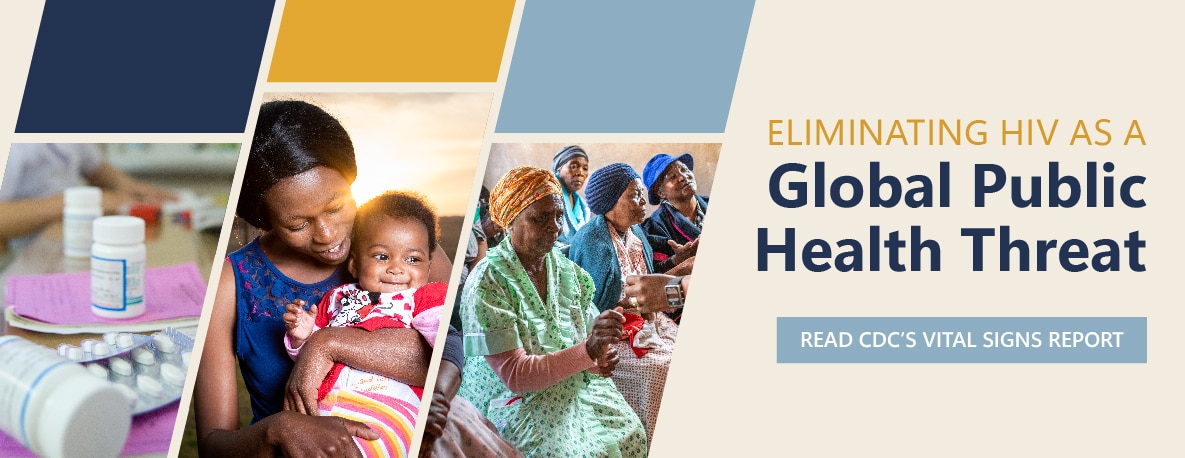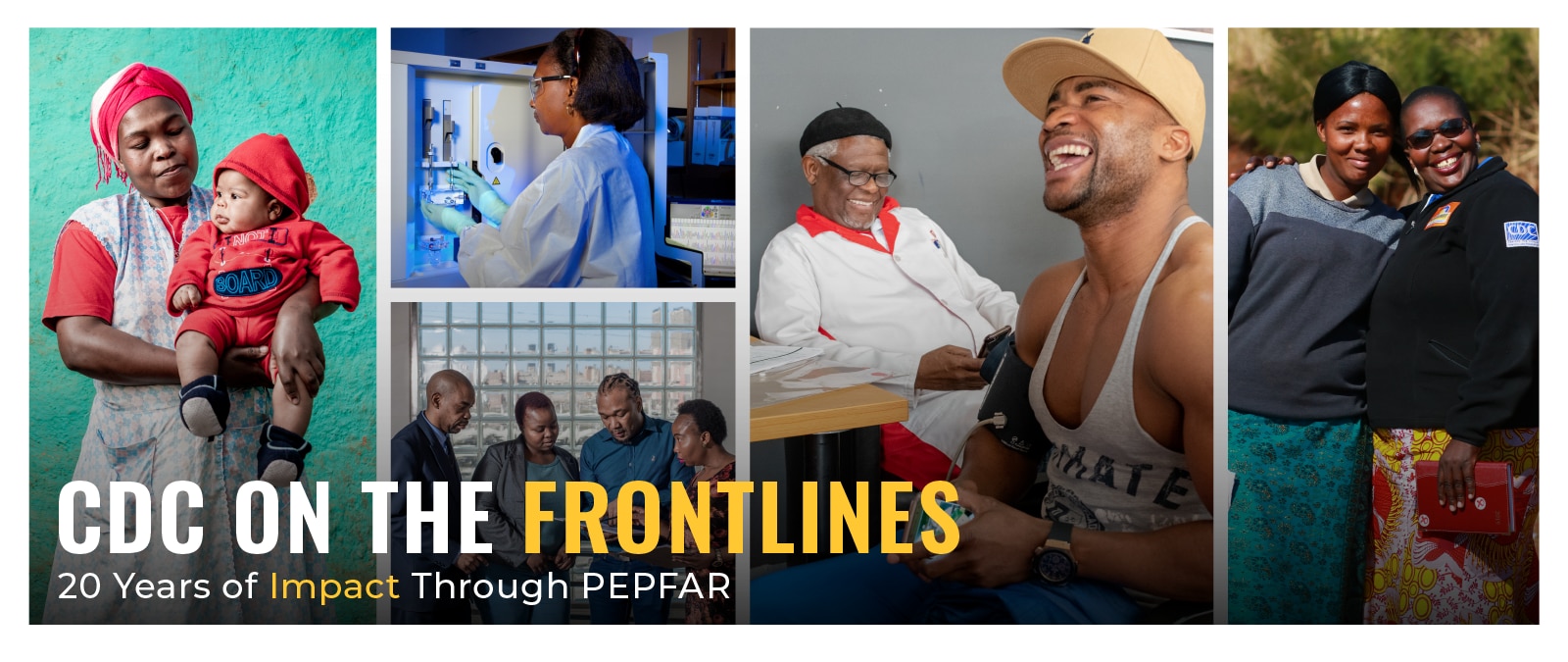Vietnam Country Profile

Vietnam Country Profile
Discover more about CDC’s work in Vietnam by viewing our detailed country profile
Country Overview
CDC’s Vietnam office was established in 1998 and works with the Government of Vietnam to build effective and sustainable HIV surveillance, treatment, and prevention programs and to strengthen national systems for tuberculosis (TB) surveillance, control, diagnosis, and treatment. From 2016, when transition of HIV services to the Government of Vietnam was initiated, CDC accelerated technical assistance focused on innovation in program models, strengthened HIV laboratory and diagnostic capacity, and enhanced capacity for HIV surveillance, epidemiology, and program monitoring. Since 1997, CDC has provided technical support to Vietnam’s National TB Program to strengthen efforts to find, cure, and prevent TB, HIV-associated TB, and multidrug-resistant TB. This is achieved by strengthening the country’s capacity to operationalize new and existing TB control tools, building the evidence base for improved TB control and prevention, and using the evidence to guide data-driven decision-making.
Per Capita GNI
$4,010
(2022)
Population (million)
98.18
(2022)
Under 5 Mortality
20.6/1,000 Live Births
(2021)
Life Expectancy
73.6 Years
(2021)
Estimated HIV Prevalence
0.3%
(Ages 15-49): (2022)
Estimated AIDS Deaths
4,000
(Age≥15) (2022)
TB Treatment Success Rate
91%
(2020)
Estimated TB Incidence
173/100,000
(2021)
Estimated Orphans Due to AIDS
76,000
(2022)
TB patients with known HIV-status who are HIV-positive
3%
(2021)
Reported Number Receiving Antiretroviral Therapy (ART)
180,164
(Age≥15) (2022)
Strategic Focus
The Centers for Disease Control and Prevention (CDC) office was established in Vietnam in 1998. Through CDC’s Division of Global HIV and TB (DGHT), CDC-Vietnam partners with the Government of Vietnam (GVN) to build effective and sustainable HIV surveillance, treatment and prevention programs and strengthen national systems for Tuberculosis (TB) surveillance, control, diagnosis and treatment.
CDC is a principal agency implementing HIV programs under the U.S. President’s Emergency Plan for AIDS Relief (PEPFAR) in Vietnam. With the establishment of PEPFAR in 2003, Vietnam was one of the first 15 focus countries targeted for rapid scale-up of life-saving treatment and prevention programs. With Vietnam’s subsequent entry into middle-income status, the country has become a global leader in embracing financial and program responsibility for delivery of essential HIV treatment and prevention services for its citizens. Through its unique relationship with Vietnam’s Ministry of Health (MOH), CDC supports the effective transition of HIV services to primary domestic financing and program responsibility—prioritizing continuity and quality of patient services—while accelerating toward sustainable HIV epidemic control through concentrated efforts in two priority regions, Northern Economic Zone and Ho Chi Minh City Metropolitan.
CDC has been providing technical support to Vietnam’s National TB Program (NTP) since 1997 to strengthen efforts to find, cure and prevent TB, HIV-associated TB, and multidrug-resistant TB in adults and children by strengthening capacity to operationalize new and existing TB control tools, building the evidence-base for improved TB control and prevention, and using the evidence to guide data-driven decision-making.
Key Activities and Accomplishments
With transition of HIV services to Vietnam, CDC continues its close collaboration in support of the national HIV response through responsive technical assistance, support for innovation in program models, strengthened HIV laboratory and diagnostic capacity, and enhanced capacity for HIV surveillance, epidemiology, and program monitoring. CDC currently leads and supports activities to evaluate and improve TB case finding, optimize treatment for TB, TB infection control, screening and treatment of latent TB infection among priority populations, and surveillance and laboratory capacity building. While injection drug use remains a primary driver of the HIV epidemic in Vietnam, other groups, such as men who have sex with men, have seen increased infection rates in large urban settings. Other CDC/DGHT’s activities and accomplishments in Vietnam include:
- CDC-supported provinces and sites have continued to lead the successful transition of HIV patients to the GVN’s financial and program responsibility. At the end of 2017, PEPFAR Vietnam has transitioned an additional 11 provinces, with the proportion of PLHIV who were on antiretroviral treatment (ART) that enrolled in social health insurance (SHI) increasing from 40% (2015) to 81% (2017).
- Findings from a CDC-supported study of men who have sex with men (MSM) in Hanoi confirm a demonstrable increase of HIV prevalence among young MSM, and implementation of HIV recency testing in this study population indicates high rates of incident HIV infections among urban MSM. As a result, the PEPFAR program is supporting rapid expansion of pre-exposure prophylaxis (PrEP) in the high risk, high yield young MSM networks.
- By December 2017, there were 124,696 patients on ART in the whole country, accounting for 59% of reported PLHIV. Of those on ART, 72.8% patients received HIV viral load (VL) test in the last 12 months. Vietnam has among the highest viral suppression rates reported across PEPFAR-supported programs. Fully 93% of tested patients have HIV VL of <1000 copies/mL. Importantly, 92% of ART patients in Vietnam are virally suppressed below 200 copies/mL, meaning that they cannot transmit HIV to their sexual partners.
- Supported GVN to increase provider initiated HIV testing & counseling for 78% of persons with TB, linked 89% of TB patients living with HIV to ART, and scaled up TB preventive treatment among PLHIV. Sites with high coverage are showing a reduction in TB incidence and mortality.
- CDC’s intensified case finding (ICF)/Isoniazid preventive therapy (IPT) cohort study in PLHIV demonstrated reduced TB incidence amongst persons who received IPT as well as reduced mortality among people living with HIV (PLHIV) routinely screened for TB. Findings influenced both international and national policy changes concerning ICF practices and IPT uptake amongst PLHIV.
- CDC partnered with GVN, PLHIV and community-based organizations, and NGO partners to address HIV-related stigma and to jointly incorporate U=U (Undetectable=Untransmittable) messaging into its treatment and prevention programs.

Leveraging New Tools for TB Testing in Vietnam
Since 1998, the U.S. Centers for Disease Control and Prevention (CDC) has worked with the Vietnam Ministry of Health to support and expand programs that target priority diseases, including tuberculosis (TB).

Vital Signs: Global HIV Communications Toolkit
In 2003, the U.S. President’s Emergency Plan for AIDS Relief, or PEPFAR, was announced. When it was launched, PEPFAR became the largest commitment by any nation to address a single disease in history. At the time, HIV was a global crisis, devastating families, communities, and economies worldwide—particularly in sub-Saharan African countries.

CDC On the Frontlines
Over the past 20 years, the U.S. President’s Emergency Plan for AIDS Relief (PEPFAR) has saved millions of lives as a leader in the global response to two of the world’s deadliest infectious diseases – HIV and TB. As a key implementing agency of the U.S. President’s Emergency Plan for AIDS Relief (PEPFAR), CDC is at the forefront of these global efforts to treat and prevent these diseases.